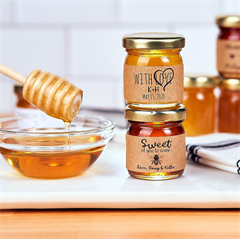In a world where sustainable practices are gaining prominence, honey jars emerge as a model of environmentally conscious packaging. These containers not only house one of nature’s most treasured delights but also contribute to reducing the ecological footprint. This blog delves into the sustainable aspects of honey jars and their impact on the environment.
Eco-Friendly Materials:
- Glass: Glass honey jars are reusable, recyclable, and inert, preserving the purity of honey without leaching harmful chemicals. After use, they can be repurposed or recycled indefinitely.
- Minimalist Design: Many honey jar designs prioritize minimalism, reducing excess materials and waste. This streamlined approach aligns with sustainable packaging principles.
- Labels and Inks: Manufacturers are increasingly using eco-friendly label materials and inks, minimizing the environmental impact of packaging.
Economic and Environmental Benefits:
- Reduced Waste: Durable glass jars reduce the need for single-use packaging, contributing to a reduction in plastic waste.
- Resource Conservation: Glass production uses less energy compared to plastic manufacturing. Recycling glass further conserves resources.
- Brand Reputation: Brands that prioritize sustainable packaging demonstrate a commitment to environmental responsibility, earning favor with eco-conscious consumers.
Circular Economy: Honey jars exemplify the circular economy model by encouraging reuse. Once emptied, these jars can find new life as storage containers, vases, or DIY crafts.
Consumer Awareness: Honey jar manufacturers often communicate their commitment to sustainability, raising consumer awareness about the importance of responsible packaging choices.
As consumers seek products aligned with their values, honey jars offer an eco-friendly option that reflects a conscious choice for a greener future. By supporting brands that prioritize sustainability, consumers contribute to a shift toward more responsible packaging practices in the food industry.



























